I AM LEGEND (2007)
The last man surviving in New York City seeks a cure for the virus which has wiped out most of humanity.
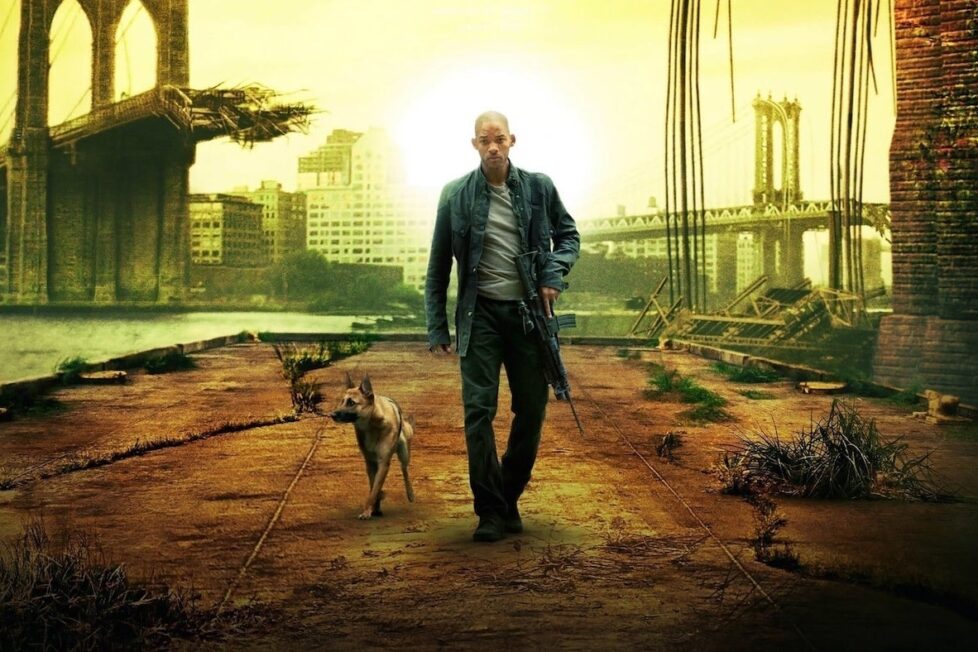
The last man surviving in New York City seeks a cure for the virus which has wiped out most of humanity.


A nuclear holocaust has rarely been portrayed overtly in mainstream cinema, perhaps being considered too terrible to show. Instead, the end of the world is more often brought about by natural forces or, more symbolically, by scientific developments gone wrong. But there’s little doubt that global destruction is at least partly a metaphor for the Bomb (even if it may now become as much a metaphor for climate change)—and both Robert Matheson’s 1954 novel I Am Legend and the better-known of the two earlier film versions, The Omega Man (1971), all but acknowledge this by setting their tales of apocalyptic disease in the aftermath of war.
Francis Lawrence’s I Am Legend, the third film based on the novel, echoes this in a slightly different way. Here, the cause of the disaster lies firmly in medical laboratories—specifically, a man-made virus designed to cure cancer but instead killed most of the human race, and turned nearly all the survivors into zombie-vampire creatures—and there’s no mention of a recent war.
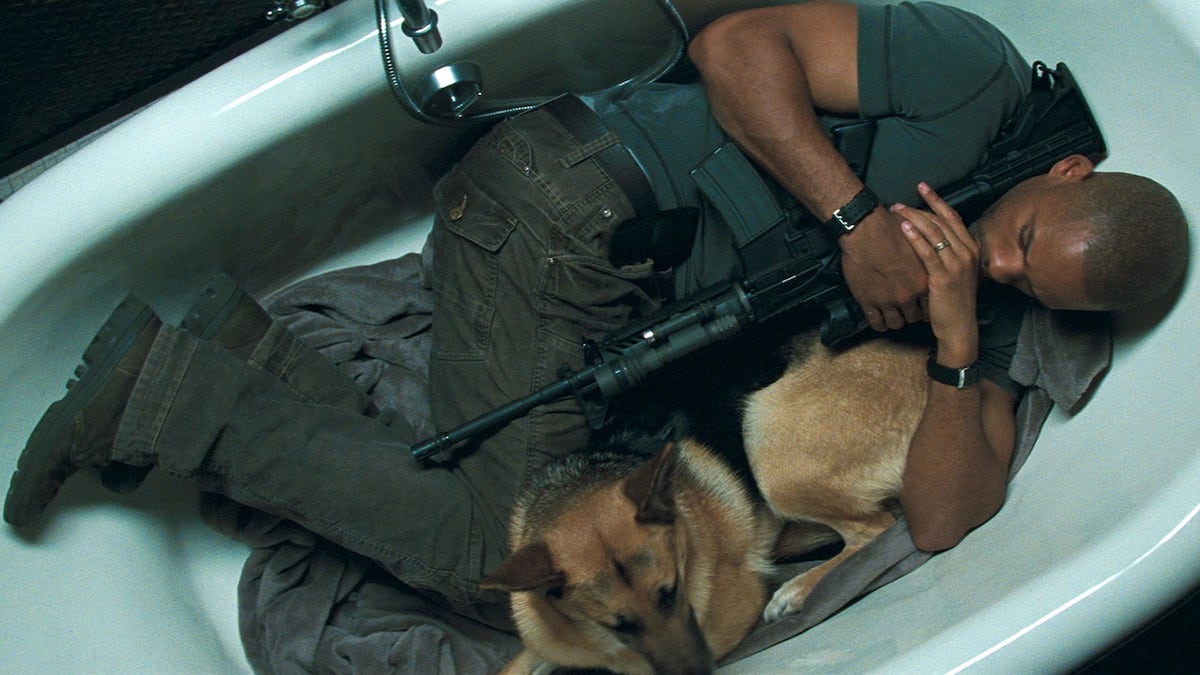
But the action is relocated from the Los Angeles of Matheson’s original and The Omega Man to New York, and Will Smith’s Robert Neville twice refers to the city as the “ground zero” of the devastating outbreak, a phrase strongly associated with 9/11 that doesn’t appear in either the book or the earlier film. Dread of terrorism has replaced receding fears of nuclear war, although the logic of the metaphor isn’t quite as potent; terrorism doesn’t, after all, depend on scientific advances in the way the atomic bomb did.
Still, it’s clear from the beginning of Lawrence’s film (as in so many end-of-the-world movies) that science can be a mixed blessing. The opening scene depicts a confident, smiling doctor called Krippin speaking in 2009, reporting that her team’s modified virus has achieved a 100% success rate in cancer treatment. (An uncredited Emma Thompson plays Krippin, and the resemblance of the name to the murderer Dr Crippen a century earlier is odd, though possibly coincidental.)
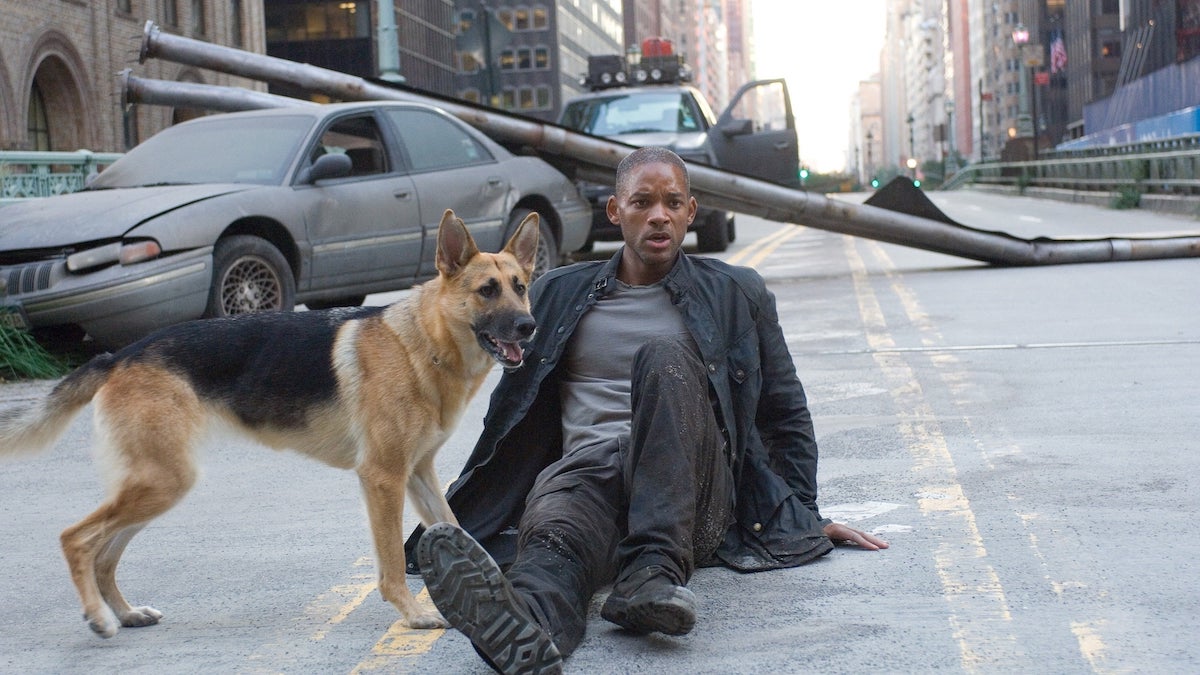
We then jump forward to 2012, and though the details of the disaster that Krippin unintentionally brought about are not spelt out in detail until much later, the gist is clear: New York City is deserted, abandoned army tanks block streets, vegetation is taking over (though not as quickly as it would in actuality, as anyone with patio weeds can attest), deer run free, while lions (presumably escaped from zoos) pursue them.
And through all this drives Neville (Smith) and his loyal German Shepherd, Sam, at what seems an unwisely high speed in a world without emergency rooms—until it becomes apparent he’s anxious to get home before sunset…
This sequence is effectively shot, packed with detail and instantly intriguing; it would have been all the more so in 2007 when post-apocalyptic movies weren’t quite as common as they are now (although 2002’s 28 Days Later had famously achieved much the same unsettling feeling of the familiar rendered strange and threatening with its opening scenes in an empty London).
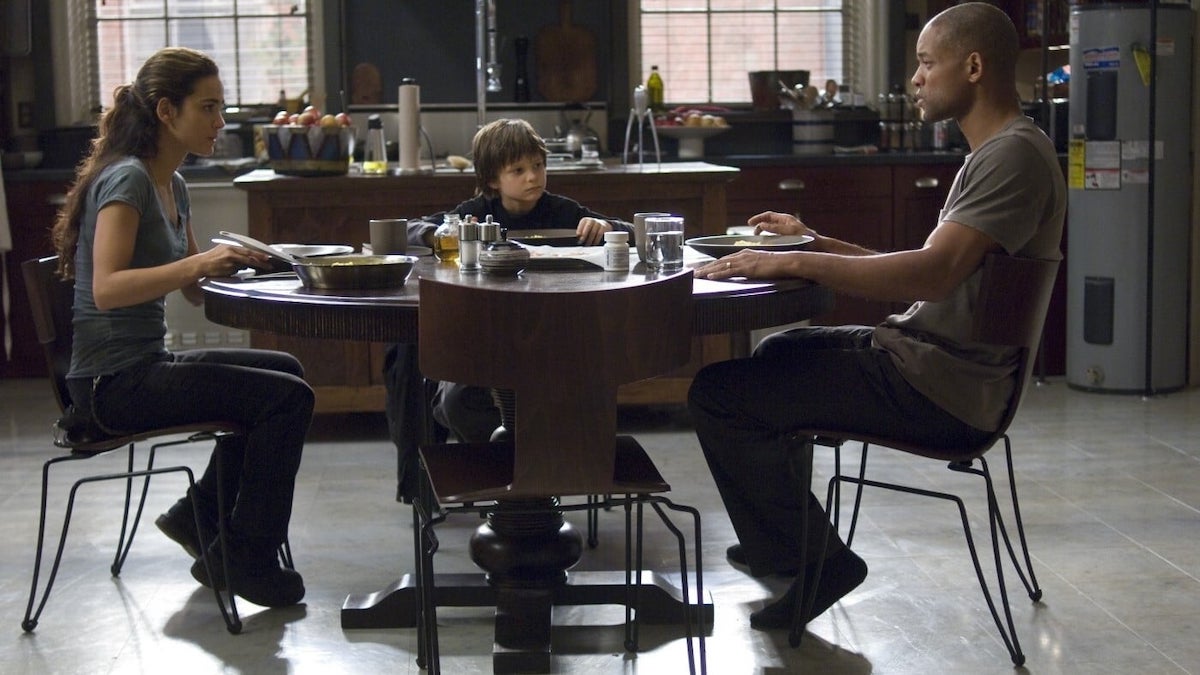
For some time, I Am Legend continues with the daily routine of Neville and Sam: he scavenges from apartments, grows corn, positions mannequins around a DVD store for a facsimile of human company, and broadcasts details of a meeting point on AM radio in hope of the real thing. The interest of I Am Legend here is mainly in the practicalities of survival and, for a long time, it resembles not so much a zombie movie as something like The Martian (2015), with Smith in a similar position to that film’s Matt Damon.
But we also discover that Neville, a senior army doctor before the virus wrought its destruction, is continuing to search for a cure, experimenting on rats and just maybe making some headway; we learn through flashbacks that he had a wife and child, presumably now among the dead; and then finally, half an hour into the film, we glimpse a hive of ‘Darkseekers’ (though neither term is yet used), huddled in a building safe from the sunlight.
These are the people the virus infected but didn’t kill, and they’ve since eaten most of the immune, leaving only Neville in the Big Apple. With traits of both zombies and vampires, they more resemble the former, just as Matheson’s novel described them as vampires yet was an acknowledged influence on George A. Romero’s zombie films.
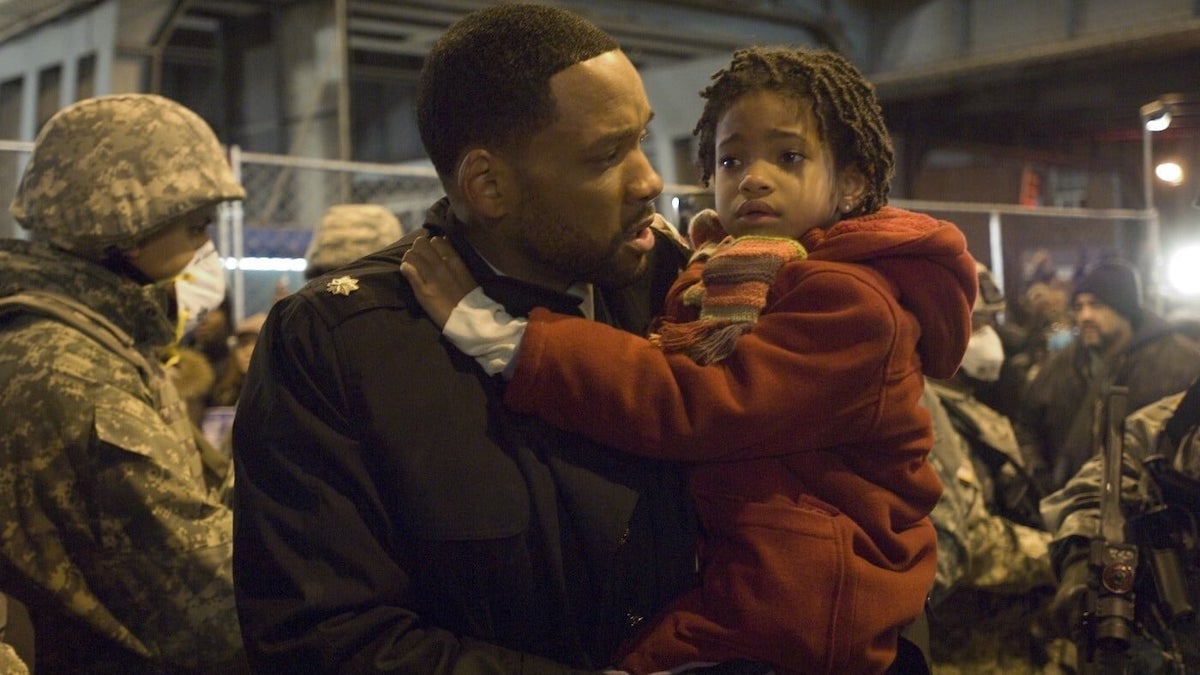
Unfortunately, the rather Gollum-like CGI Darkseekers are among the weaker links in I Am Legend. They’re fast and strong, with superhuman climbing abilities, but their movement doesn’t convince and neither, in close-ups, does the texture of their skin. The digital deer and lions fare better, though infected wild dogs suffer from the same problems (dogs are partially but not totally immune to the virus, causing Neville much anxiety over Sam).
More plausible are the quotidian details of Neville’s lonely existence: the kitchen stockpiled with food, stacks of books to read, a cover of Time magazine bearing his photo on the fridge, Van Gogh’s Starry Night hanging on a wall, liberated from the Museum of Modern Art. And it’s here, really, that the heart of I Am Legend lies; it’s much, much more about Neville than about the Darkseekers, and indeed we don’t ever see much of them.
Nor do they have the significance they do in Matheson’s novel, where Neville eventually comes to realise they’re the future of humanity and he’s its past, soon to be nothing more than a legend to them: hence the cryptic title. Although an alternate ending closer to Matheson’s in its import was shot for I Am Legend, and included on the 2008 DVD special edition, in the released theatrical version this point is barely detectable and the title is explained away by a rather wishy-washy reference to Neville’s achievements.
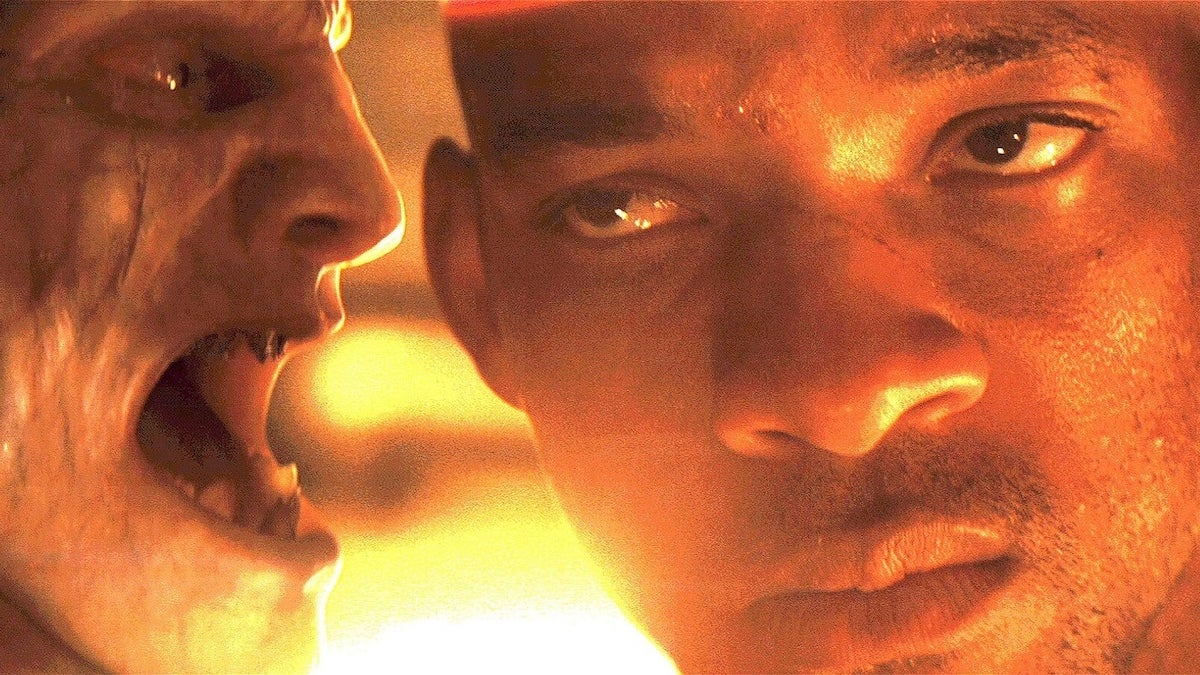
Director Lawrence, whose second feature this was, tells the story efficiently, clearly and self-effacingly, with little sign of his background in music videos. His technique is never noticeable even if the digital effects are pervasive, and the audience’s attention remains firmly on Smith, his dog, and his surroundings. Lawrence would go on to do much the same in his later movies, including Red Sparrow (2018) and three Hunger Games films (with a belated prequel on the way). Among the other directors considered, Ridley Scott might have been more self-consciously stylish, and Michael Bay would surely have gone bigger on the action sequences which Lawrence is happy to treat more matter-of-factly.
The nightmare combination for anyone who wanted a movie slightly resembling Matheson’s novel, indeed, might have been Bay and Arnold Schwarzenegger, who at one point was considered for the Smith role. Instead, Smith’s characteristic mixture of self-assurance and unassuming ordinariness suits the part well, and he’s careful to only slowly let us see the instability developing beneath Neville’s self-control after years alone.
“Please say hello to me,” he begs a mannequin, as his voice breaks. There are also signs that he almost doesn’t want to find other survivors, that his presumed position as the last man standing has come to define him. I Am Legend is about loneliness as much as action, just like Matheson’s book (and it was a topic the author would treat even more powerfully in The Shrinking Man).
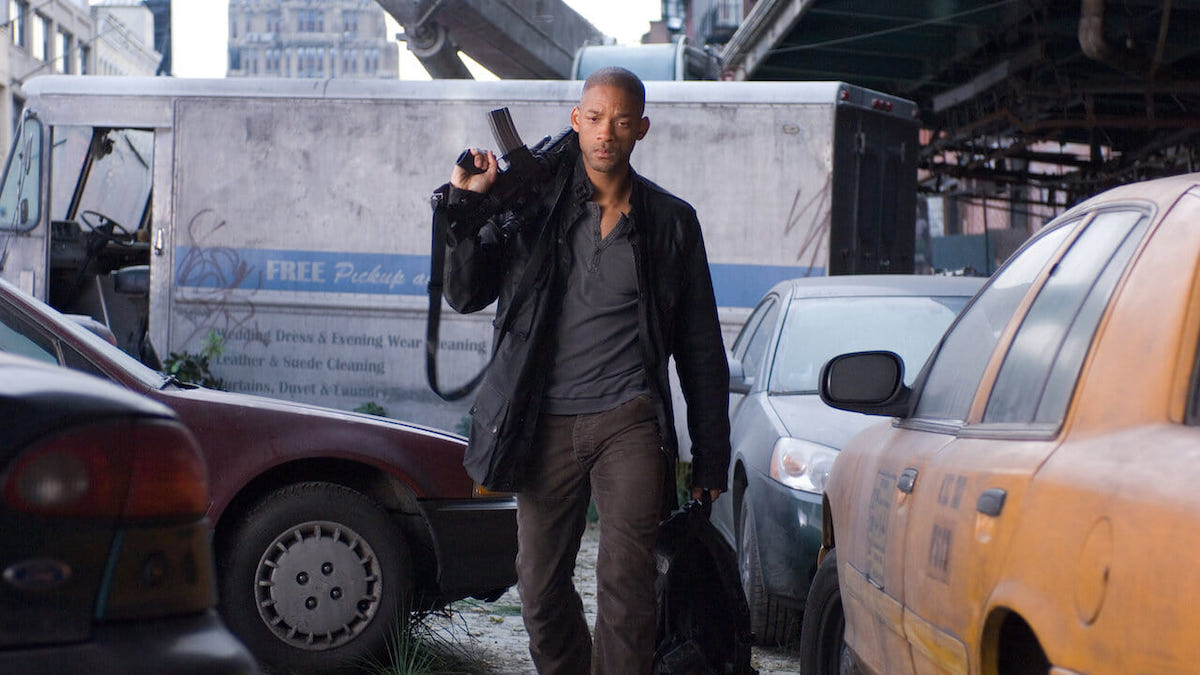
Almost the entire film is sustained by Smith, and he performs solo every bit as strongly as Tom Hanks in Cast Away (2000), an achievement recognised by critics at the time who praised Smith while expressing doubts about other aspects of the film, particularly the weak—even sentimental—original ending. Elsewhere in the small cast, few of the actors have much to do and most of it is confined to flashbacks, although Charlie Tahan (more recently striking as Wyatt in Netflix’s Ozark) catches the eye, as does Dash Mihok as a Darkseeker who appears to lead the others—hinting that they do, after all, have some kind of society.
I Am Legend was a healthy commercial success, reaching the box office Top 10 both in the US and internationally. A sequel is reportedly being developed, again featuring Smith, but it’s unlikely to leave the impact this did in 2007. If some scenes from I Am Legend seem over-familiar that’s largely due to the abundance of zombie movies and TV that appeared since, and the more recent interest in movies about pandemic-like disasters that developed during the first years of COVID-19 (even if most of the movies themselves predated the virus).
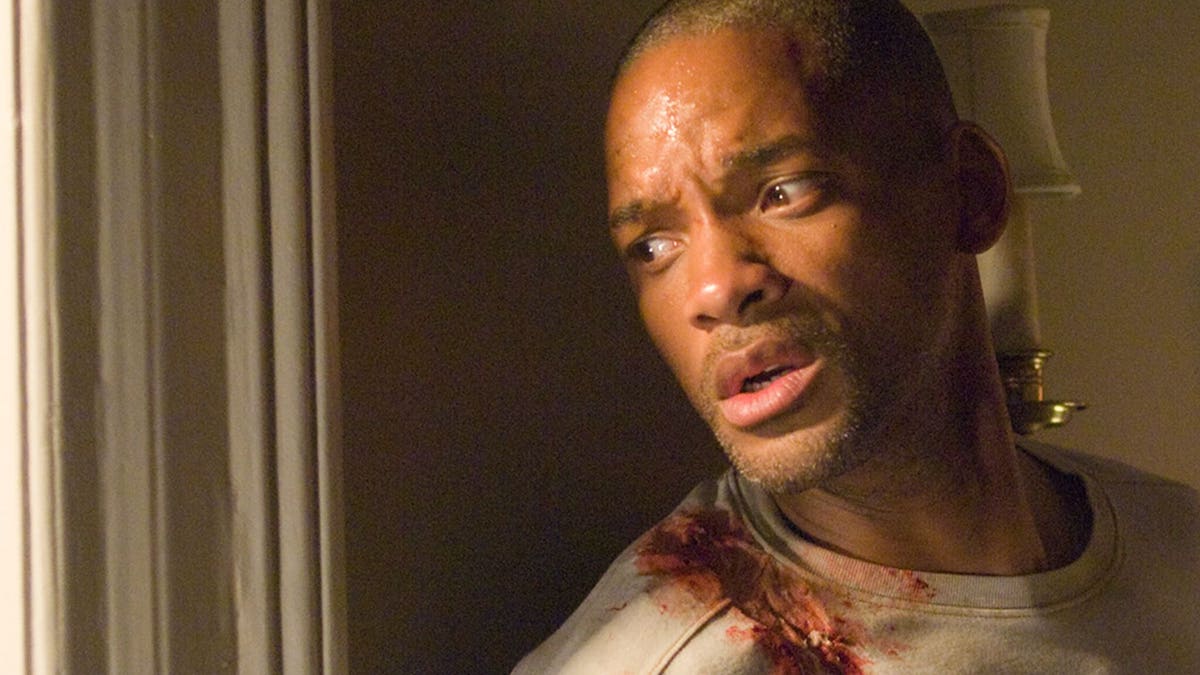
Still, I Am Legend is superior to many genre exercises. It’s a film of ideas at least to some extent, and though some of them are telegraphed simplistically (Bob Marley singing “Everything’s Gonna Be Alright” when it quite clearly might not be) others are more thoughtful: the film implicitly draws parallels between Dr Krippin’s cataclysmic anti-cancer virus and Neville’s own hubris in imagining that he can restore the world to its former state by defeating that virus alone, for example.
Its vision of a world after humanity is still one of the most effective even if the idea has become commonplace, Smith’s performance is among the best of his career, the human story is prioritised over zombie shocks, and Arnie is nowhere to be seen. Ever since we gained the capability to destroy our own civilisation nearly 80 years ago, we have been fascinated by its end, and I Am Legend feeds that fascination satisfyingly.
USA | 2007 | 101 MINUTES | 2.35:1 | COLOUR | ENGLISH

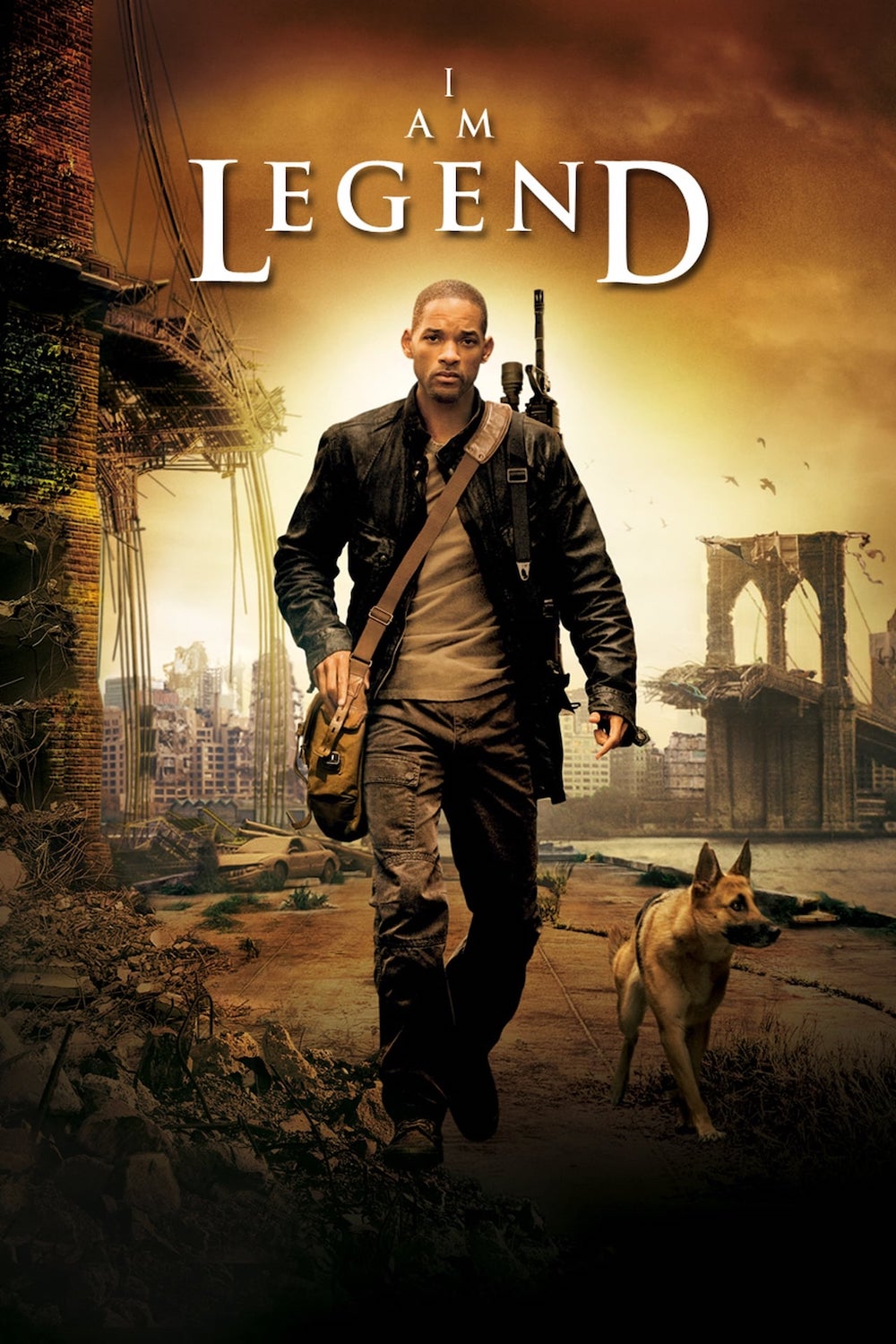
director: Francis Lawrence.
writers: Mark Protosevich & Akiva Goldsman (based on the novel by Richard Matheson and the screenplay for ‘The Omega Man’ by John William Corrington & Joyce Hooper Corrington).
starring: Will Smith, Alice Braga & Charlie Tahan.
